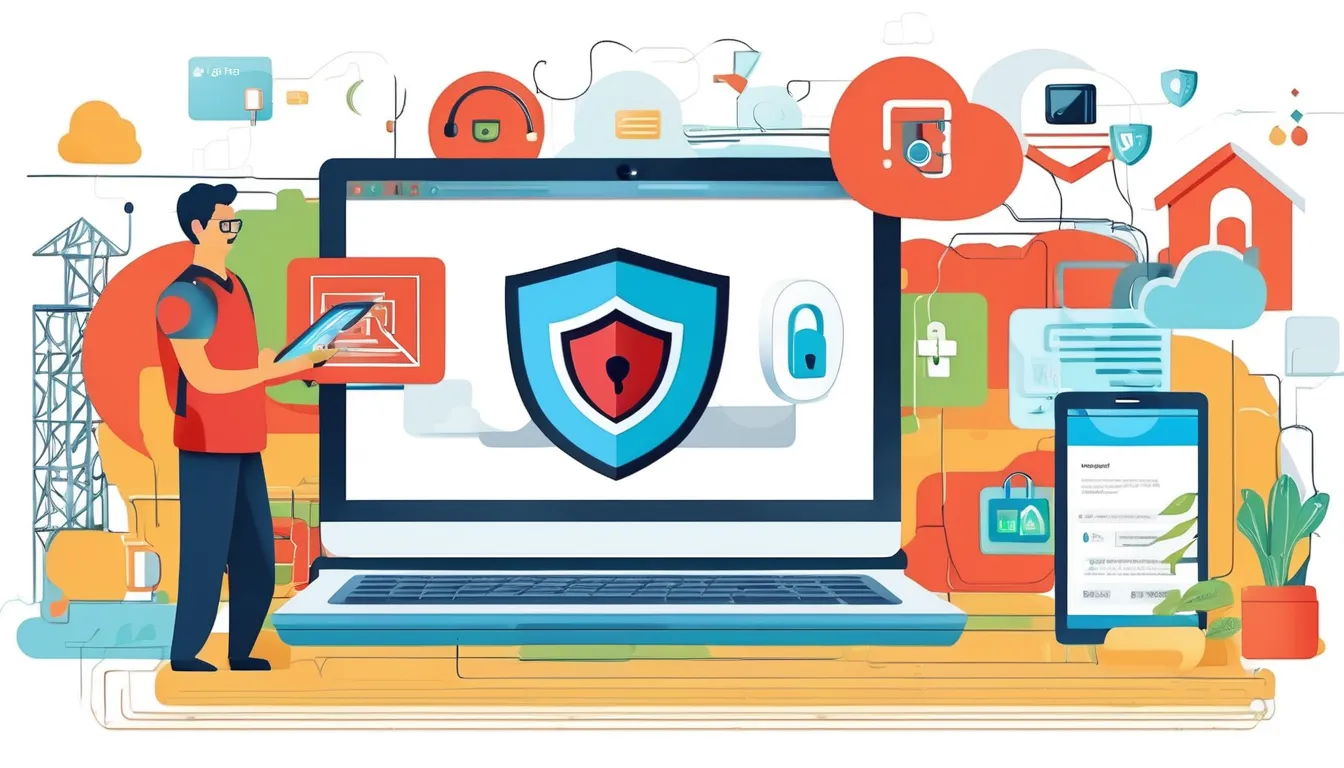When you discover a security breach, it’s crucial to act swiftly and methodically. Start by assessing the situation to identify the extent of the compromise, then contain the breach to prevent further damage. Don’t overlook the importance of notifying those affected and providing them with clear guidance. As you navigate this challenging process, you’ll need to conduct a thorough investigation to understand what went wrong. But what measures can you take to ensure it doesn’t happen again? Let’s explore the essential steps you should consider moving forward.
Assess the Situation
When you suspect a security breach, the first step is to assess the situation thoroughly.
Begin by gathering all relevant information. Check your logs, identify unusual activities, and monitor your systems for signs of unauthorized access. Look for things like unexpected file changes, unfamiliar user accounts, or unusual network traffic. These indicators can provide crucial insights into the extent of the breach.
Next, talk to your team. Each member may have noticed something that could help you understand the situation better. Encourage open communication, as this can reveal hidden issues.
Document everything you find, as this will be vital for further investigation and reporting.
Don’t forget to check your security protocols. Ensure that your firewalls, antivirus software, and other protective measures are functioning properly.
This can help you determine if any weaknesses contributed to the breach.
Contain the Breach
Once you’ve assessed the situation and gathered all pertinent information, it’s time to contain the breach. Start by isolating affected systems to prevent further unauthorized access. Disconnect compromised devices from your network immediately.
If you’re dealing with a server breach, take it offline to stop the spread of malicious activity.
Next, change all relevant passwords and access codes. This step is crucial, as it ensures that attackers can’t regain access once you’ve removed them. Implement multi-factor authentication if it isn’t already in place, adding an extra layer of security.
Review your firewall settings and intrusion detection systems. Make sure they’re configured correctly to block any suspicious activity and monitor for further breaches.
Identify the entry point and any vulnerabilities that were exploited, so you can address them promptly.
Document everything you do during this process. Record timelines, actions taken, and any communications related to the breach. This information will be invaluable for later analysis and reporting.
Notify Affected Parties
After you’ve contained the breach, it’s crucial to reach out to affected parties as soon as possible.
Prompt notification helps maintain transparency and builds trust with those impacted. You want to ensure they understand the situation and what steps you’re taking to address it.
When notifying affected parties, keep these key points in mind:
- Be Honest and Clear: Provide a straightforward explanation of what happened, how it affects them, and what information may have been compromised.
- Offer Guidance: Share steps they can take to protect themselves, such as changing passwords or monitoring accounts for suspicious activity.
- Establish Support Channels: Create a dedicated line of communication for inquiries, whether it’s a phone number, email, or website, so they feel supported during this time.
Investigate and Analyze
Investigating and analyzing the breach is essential to understanding its root cause and preventing future incidents. Start by gathering all relevant data surrounding the breach. This includes log files, user activity reports, and any alerts from your security systems. The more information you collect, the clearer the picture will become.
Next, identify how the breach occurred. Look for vulnerabilities that were exploited, such as outdated software or weak passwords. Analyze if there were any patterns in the attack that might provide insights into the perpetrator’s methods. This step is crucial for developing a comprehensive understanding of the situation.
Involve your IT and security teams in the investigation. Their expertise can help you piece together the timeline of events and determine the scope of the breach.
Document everything meticulously, as this information will be invaluable for future reference and compliance with legal requirements.
Implement Preventative Measures
With a thorough understanding of how the breach happened, you can now focus on implementing preventative measures to safeguard your systems.
Start by reviewing your ONLINE SECURITY policies and protocols. Make sure they’re up-to-date and align with current best practices. This’ll help you identify any gaps that could be exploited in the future.
Next, invest in advanced security tools. Firewalls, intrusion detection systems, and anti-malware programs are essential for protecting your network. Regularly update these tools to ensure you’re shielded from the latest threats.
Finally, train your employees on security awareness. They’re often the first line of defense. Make sure they know how to recognize phishing attempts and understand the importance of strong passwords.
Here’s a quick checklist to guide your efforts:
- Review and update security policies: Ensure they reflect the latest standards and practices.
- Invest in advanced security tools: Utilize firewalls and intrusion detection systems.
- Conduct regular employee training: Educate your team about security best practices and threat recognition.
Conclusion
In conclusion, handling a security breach requires swift and decisive action. By assessing the situation, containing the breach, notifying affected parties, and investigating the incident, you pave the way for recovery. Don’t forget to implement preventative measures to strengthen your defenses. Remember, staying proactive and educating your team can significantly reduce the risk of future breaches. With these steps, you’ll be better equipped to protect your organization and its valuable data.





